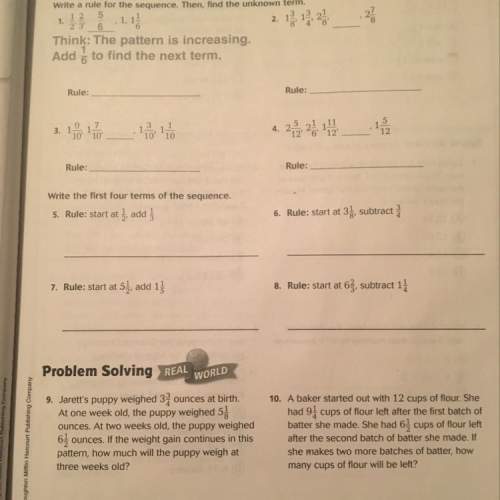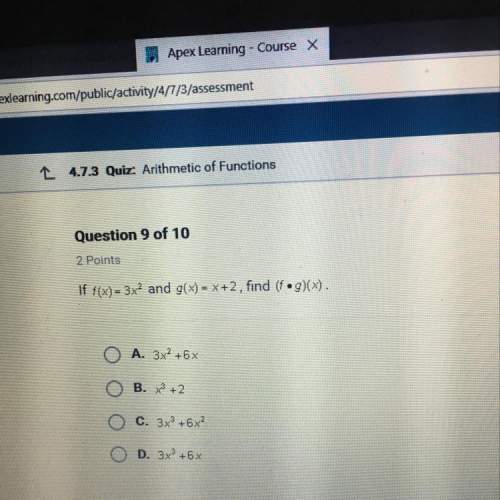
Mathematics, 07.05.2020 12:00 icantspeakengles
One urn, U1, contains one blue ball (labeled B1) and three red balls (labeled R1, R2, and R3). A second urn, U2, contains two red balls (labeled R4 and R5) and two blue balls (labeled B2 and B3). An experiment is performed in which one of the two urns is chosen at random and then two balls are randomly chosen from it, one after the other without replacement. (a) Construct the possibility tree showing all possible outcomes of this experiment.

Answers: 1


Other questions on the subject: Mathematics

Mathematics, 21.06.2019 18:30, Ateruel95
Dakota earned $7.50 in interest in account a and $18.75 in interest in account b after 15 months. if the simple interest rate is 4% for account a and 5% for account b, which account has the greater principal? explain. to make it a little easier, there is an image. good luck!
Answers: 1

Mathematics, 21.06.2019 20:30, lorelaistudent
Barbara has a good credit history and is able to purchase a car with a low-interest car loan. she co-signs a car loan for her friend jen, who has poor credit history. then, jen defaults on the loan. who will be held legally responsible by the finance company and why? select the best answer from the choices provided. a. barbara will be held legally responsible because she has a good credit history. b. jen will be held legally responsible because she drives the car. c. barbara will be held legally responsible because she is the co-signer. d. jen will be held legally responsible because she has a poor credit history. the answer is a
Answers: 3

Mathematics, 21.06.2019 20:40, kevin7987
David estimated he had about 20 fish in his pond. a year later, there were about 1.5 times as many fish. the year after that, the number of fish increased by a factor of 1.5 again. the number of fish is modeled by f(x)=20(1.5)^x. create a question you could ask that could be answered only by graphing or using a logarithm.
Answers: 1
You know the right answer?
One urn, U1, contains one blue ball (labeled B1) and three red balls (labeled R1, R2, and R3). A sec...
Questions in other subjects:




Mathematics, 24.02.2020 17:20










